Time to Read: 3 Minutes
A well-defined GTM strategy framework serves as a blueprint that enables businesses to navigate the complexities involved in product launches, market expansions, and customer acquisitions.
In today’s highly competitive digital landscape, businesses that maximize their impact and achieve tangible results implement this framework as part of their go-to-market strategies.
In this blog, we will delve into various GTM approaches that are tailored based on careful business consideration. Businesses can make a lasting impact in their respective industries by utilizing a strategic structure that unlocks success.
GTM Strategy Framework & Go-To-Market Strategies
A GTM strategy is a company’s calculated plan to launch a new product or service and deliver value to customers, ultimately aiming to gain a competitive advantage. A stellar example of a GTM strategy is Apple’s approach to launching the OG iPhone in 2007. Apple’s GTM strategy framework focused on creating anticipation and generating buzz about the phone up to six months before its actual release by using heavy marketing phrases like “Apple reinvents the phone” and “breakthrough Internet communicator.” Coupled with strategically timed product announcements, the company also built a strong brand image and leveraged an exclusive partnership with ATT to ensure wide distribution and customer accessibility. The strategy also emphasized highlighting unique features, user experience, and seamless integration with other Apple products to differentiate the iPhone from competitors and drive customer adoption.
Now, not every company (and perhaps never again will any company) have the level of success that Apple has with the iPhone, but that doesn’t mean GTM strategy should go by the wayside. The benefits of a well-planned and thoughtful campaign include
- A clear roadmap to launch
- Distinct differentiators from competitors
- Maximized customer acquisition and revenue growth.
To achieve that, however, you need a great GTM strategy framework.
GTM Strategy Framework: Five Essential Components
Once you’ve understood your customers, outlined your company’s mission for the long haul, and identified your competitors, it’s time to build your GTM strategy framework. Here are five essential components for maximum impact.
- Clarify your value proposition
Clearly define the unique value the product or service offers to customers, making sure to highlight its benefits and differentiators. Driving home why your target market should purchase your product is crucial for fostering customer interest and creating a compelling reason for them to choose your offering over competitors – or inaction.Validate with existing customers, prospects, partners, and advisors to ensure that it speaks clearly to what matters most.
- Select a pricing strategy
What are your customers willing to pay? Take what you learned from your customer profiles and surveys and use that feedback to set your product price. Tailor your pricing strategy to your sales motion (product-led growth versus sales-led, etc.) and target audience. Use a data-driven approach to understanding how your ideal customer researches similar solutions and makes purchases. Consider tiered-pricing models that provide flexibility for customers based on industry and persona. Finally, look closely at opportunities to be more transparent on pricing rather than forcing customers to “contact you” to understand the pricing models available to them. An optimal price aligns with your business objectives, caters to your customer profile, and positions you competitively within the marketplace.
- Design a marketing plan
There is no one-size-fits all approach to a marketing plan. You’ll need to design your strategy based on your product and how people perceive it, their preferences, and behaviors. From there you can create a timeline and outline specific marketing tactics, such as content marketing, social media, inbound, outbound, promotions, etc. Avoid too much focus on “attribution models” at the expense of creating a plan that will help you generate maximum demand in the market (from target customers) and then capture it as easily as possible. Be flexible and willing to adapt as you see what’s working and what’s not, but avoid knee-jerk reactions as well.
- Identify sales and distribution channels
Determine the most effective channels to reach the target audience, considering online platforms, retail networks, online communities, and strategic partnerships. Your sales and distribution tactics should compliment your marketing plan, enhancing overall customer engagement, streamlining the buying process, and maximizing the impact of your go-to-market strategy while maintaining fidelity to your customer acquisition cost targets
- Define KPI’s to track performance
To ensure your product launch is successful, your go-to-market strategy should have laid out objectives and KPI’s (key performance indicators) to track performance and measure success. And don’t forget to regularly review and refine your metrics based on changes to your business, product, environment, and priorities.
In Closing
Introducing a product to the market is a huge investment. However, you can position your next launch for success by adopting a go-to-market strategy framework that identifies your target audience and messaging, establishes concrete goals, and implements clear processes to execute your strategy effectively. Check out this GTM strategy template we love and think you’ll find helpful if you’re ready to go to market!
Check out our Go-To-Market Interview Guide for the top five tips to implement a diversity hiring plan.

